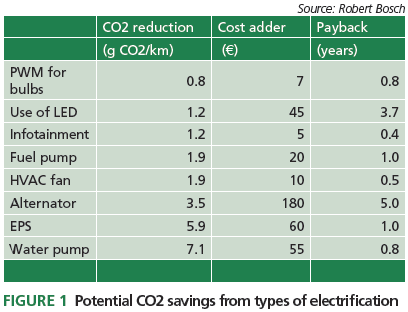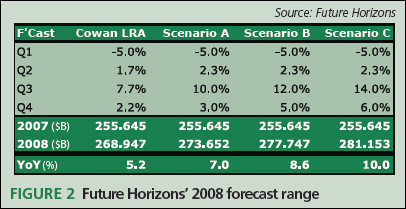The state we’re in
UK-based analyst group Future Horizons has been organizing its international electronics forums for 17 years and they continue to provide an invaluable look into what the industry’s top tier of managers is thinking. It is one thing to get your own wise analysts to pronounce on tomorrow’s market, but it is something else entirely to convince, as the forum does, the men who actually make the decisions to open up.
International Electronics 2008 was no exception. Held this year in the luxurious surroundings of the Madinat Jumeirah in the United Arab Emirate of Dubai, the location not only represented an increasingly important crossroads between east and west, but also reflected the territory’s own technological ambitions as shown by the Dubai Silicon Oasis Authority incubator and technology cluster.
There is nowhere near enough space here to review the event’s three days in its entirety, so consider this instead to be the SportsCenter highlights package.
1. Consolidation is coming
This surprising observation came courtesy of speaker Theo Claasen. Why surprising? Well, Claasen is executive vice president of NXP Semiconductors, one of the companies involved in the last major wave of silicon M&A led by the private equity sector. With that trend now widely considered over, and with many observers predicting a tough near-term future for the global economy, the thought of a new wave of consolidation may seem almost perverse.
However, Claasen backed up his observation with some hard numbers. Given total semiconductor industry revenues of $256B in 2007, he observed that (excluding foundries) there were just three companies where sales exceeded $10B, around a dozen that passed $5B, and about 35 at more than $1B (including a handful of fabless players). At the same time, roughly 150 companies had sales below $500M.
Given the increasing cost of chip development – allowing for the fact that foundries now absorb much of the process R&D and capital costs – and the need for more cooperative research among companies that otherwise compete, Claasen said a kind of ‘piecemeal consolidation’ was already under way. However, it needs to speed up; what the sector really needs, he added, is around 50 established companies.
Claasen said that NXP’s strategy is to build a set of businesses and ventures that give it the opportunity to shape or lead a market – the company recently set up a wireless venture with STMicroelectronics, for example – and which sit across three phases: ‘mature‘, ‘growing’, and ‘emerging’. He added that NXP is then trying to tune its R&D spending in these areas along the lines of 35% mature, 55% growing and 10% emerging.
2. PARC was right… again
It is amazing how often the former Xerox research facility gets cited in a way that sounds a bit like, “gonna go there, gonna do that, bet someone else gets the t-shirt though.’” On this occasion, JJ Yamaguchi, executive vice president of NEC Electronics, was on hand to point out that PARC’s two-decade-old vision of ‘ubiquitous computing’ has become a reality. The concept has been part of NEC’s marketing push for a while, but Yamaguchi’s presentation was nevertheless timely in going beyond the expanding functionality of mobile devices. He also delved into the TV’s growing role as the display device for a number of access boxes, the social consequences of increasingly cheap PCs, and not just the increasing volume of electronics in an automobile, but also its declining cost.
The big challenge, comes in matching development capital to the demands of the low-cost market. That is an activity which Yamaguchi saw coalescing around five main objectives: moving chip design upstream, more strategic alliances, the creation of new platforms and of new IP cores, and better design tools.
3. The automotive opportunity
Numerous speakers followed Yamaguchi-san in identifying the importance of the automobile. VG Gujrathi, senior general manager for electricals and electronics at Indian industrial giant TATA Motors, previewed his company’s impending launch of the sub-$2,500 Nano. Importantly, all the electronics within the car were designed in India, up to and including the ability to extend its features with telematics and in-car networking. Cost and performance have thus been delivered from outside traditional automotive technology sources. Valentin von Tils, vice president for platform development ASICs at Robert Bosch, put the opportunity in a more global context. His company expects car sales to rise from 70 million this year to 82 million by 2020, and that this will lead to a corresponding increase in the value of system sales from $53B to $89B.
Semiconductors are poised to take a large share of this growth. In 2008, they represent 44% of the value of automotive systems, but by 2020 this share will be 67.4%. In dollar terms, chips will rise from $23B sales today to $60B in 12 years’ time. Von Tils said that the key to this will be electrification – “the substitution of mechanical and hydraulic systems by electrical systems.” The drivers behind this are well known. Electronics can deliver better cost-down and also help the automotive industry reach incoming environmentally driven standards for emissions, fuel performance and so on.

In terms of energy savings and ‘green’ design, von Tils showed that across many automotive functions, the payback on moving to more electronic solutions over those in use today can be less than a year, and typically well within the eight-year life-span of an average automobile (Figure 1).
4. Here comes the Sun
Mark Pinto, CTO of fab equipment giant Applied Materials, provided one of the best quotations of the conference – although he happily acknowledged that he had taken it from Thomas Edison in 1931:
“I’d put my money on the sun and solar energy. What a source of power! I hope that we don’t have to wait until oil and coal run out before we tackle that.”
Pinto’s company has made a high profile divergence into solar energy and photovoltaics (PVs) in particular in the last few years. It has given the company a chance to leverage its expertise in semiconductor production outside its traditional business partners. And, according to Pinto’s presentation, it could start to pay off soon.
The crucial objective for solar energy has been to bring the cost per watt of PVs as close to that of a traditional carbon-fuel power station. The current production curve suggests that this should happen around 2010. Not only is the technology getting more efficient, but panel sizes are increasing rapidly.
This last point was echoed by Waguih Ishak, vice president and director of West Coast Research for Materials giant Corning. He envisaged a future where solar cells might be printed on massive continuous sheets ready for installation. More to the point, though, Ishak showed panels that would make suitable substrates for displays as well as solar cells in the 2.7x3m range. Solar is reaching critical mass in every sense.
A full set of proceedings from this year’s International Electronics Forum is available from Future Horizons (www.futurehorizons. com) as are proceedings from the Mid-term Semiconductor Industry Forecast.
Better than you might think
Future Horizons recently released the latest update to its annual forecast, and against a range from 7 to 10%, continues to favor the upper 10% figure.

According to CEO and chairman Malcom Penn, the evident economic malaise in the US and parts of Europe does not necessarily mean it is time to man the life boats. One important figure is the 4.1% global growth forecast recently offered by the International Monetary Fund. The IMF has actually revised the figure upwards since forecasting 3.7% in April.
China now represents one quarter of all growth worldwide. Its economy is, the IMF says, set to grow by 9.3% this year and by 9.5% in 2009. India will have 2008 growth of 7.9% followed by 8.0%. Numbers like these suggest that demand for chips will hold up strongly in these markets, even though the forecast is for 0.5% growth in the US this year followed by 0.6% in 2008, with the Eurozone at 1.4% and 1.2%, respectively. Manufacturing capacity has held throughout the year at just ahead of 90%; utilization, although capital expenditure has been tightly controlled. Inventories have also been carefully managed; shortages are still possible, but threats of a glut hitting average selling prices certainly seem to be off the agenda.
There are some warning signs. Debt is neither as cheap nor as available as it was with inevitable implications for some expansion and M&A plans. Also, the memory price war is by no means over.
Still, there are reasons for bullishness – and those who deny them might be well advised to remember that the world really has changed.


